CEAL@UNC regularly invites organizations and individuals committed to advancing well-being in assisted living through practice, research, and policy to present emerging and relevant topics to its Strategic Advisors. View Presentations
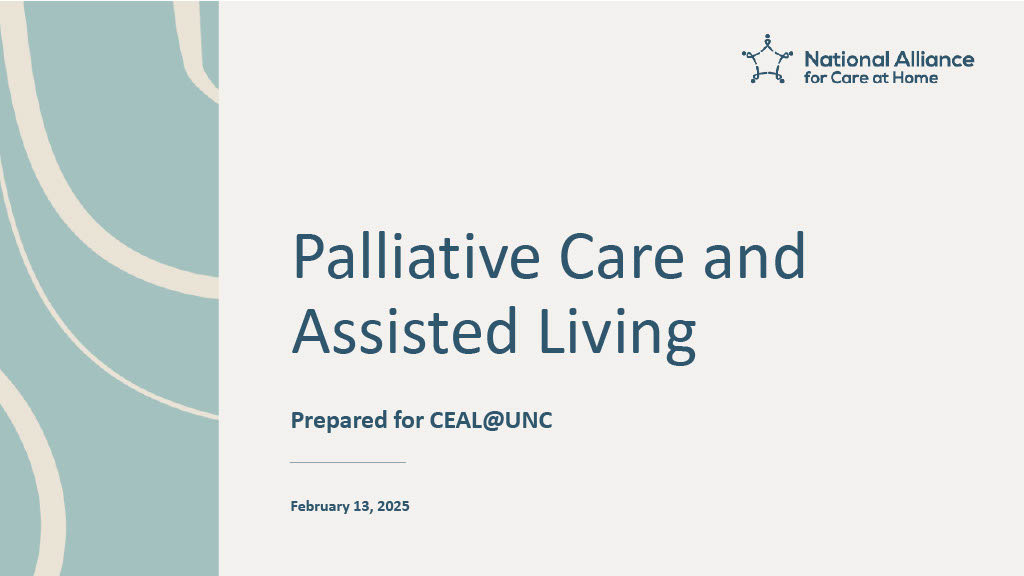

Center for Excellence in Assisted Living CEAL@UNC
Advancing the well-being of the people who live and work in assisted living through research, practice, and policy.

by Lea Efird-Green
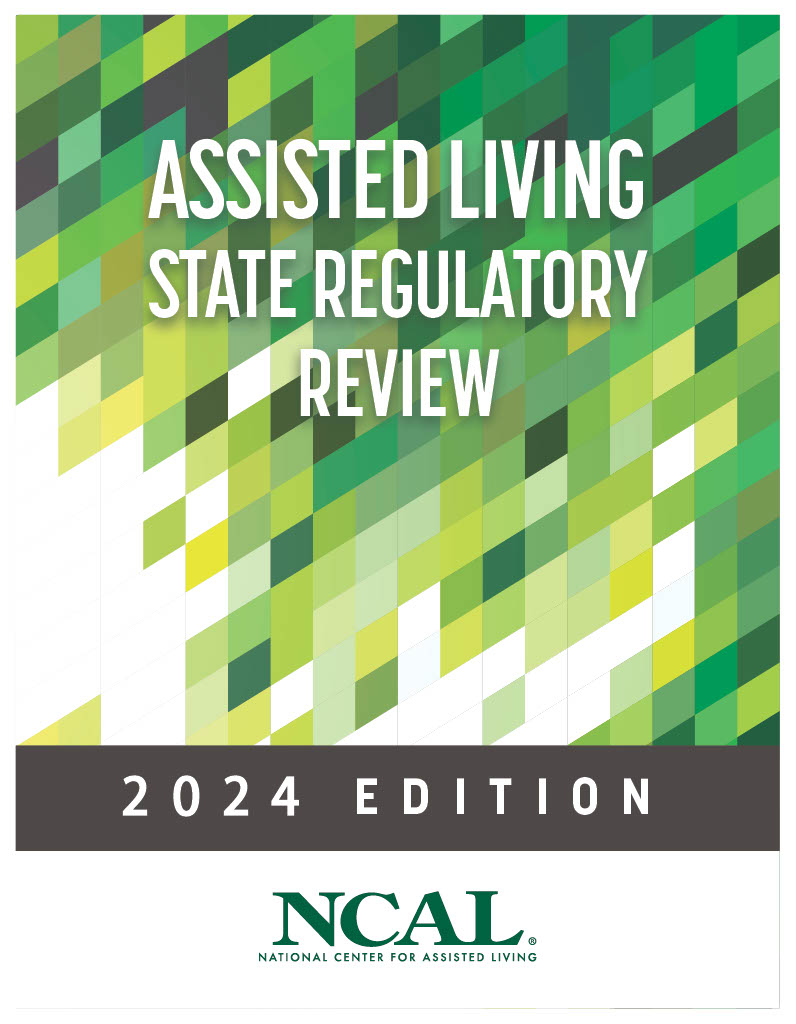
by Lea Efird-Green
by Lea Efird-Green
Background and Objectives: A better understanding of factors associated with assisted living admission and discharge practices can help identify communities that are more likely to allow residents to age in place. This study examined how state regulations and assisted living organizational characteristics related to community admission and discharge practices for bathing, getting out of bed, […]
by Lea Efird-Green
Context: Assisted living facility (ALF) residents are especially vulnerable to SARS-CoV-2 infection due to the age and comorbidities of the resident population and the social nature of these facilities. Objective: To collate all New York State Department of Health guidance and regulations to control transmission of SARS-CoV-2 infection within ALFs from March 2020 through December […]
by Lea Efird-Green
Assisted living has promised assistance and quality of living to older adults for more than eighty years. It is the largest residential provider of long-term care in the United States, serving more than 918,000 older adults as of 2018. As assisted living has evolved, the needs of residents have become more challenging; staffing shortages have […]
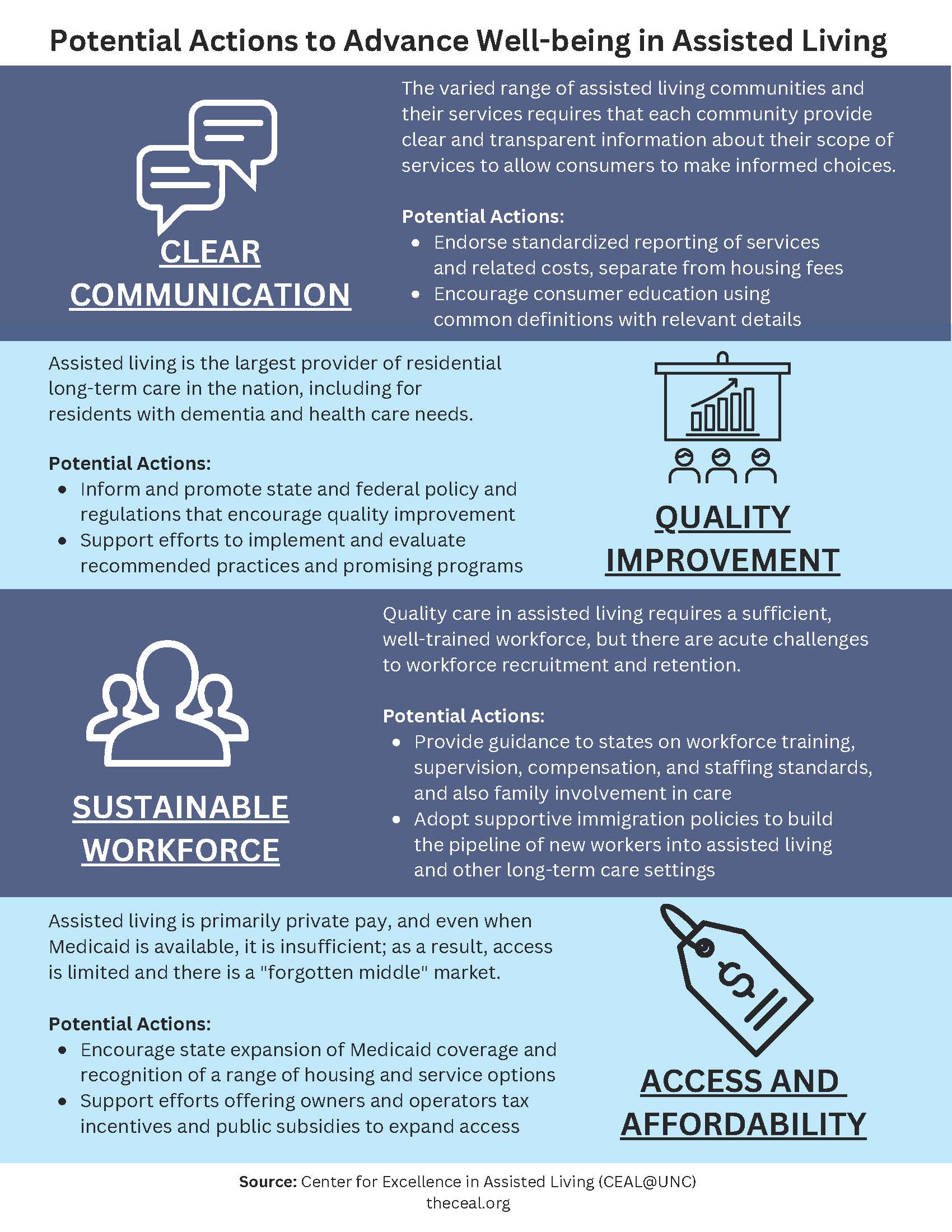
by Lea Efird-Green
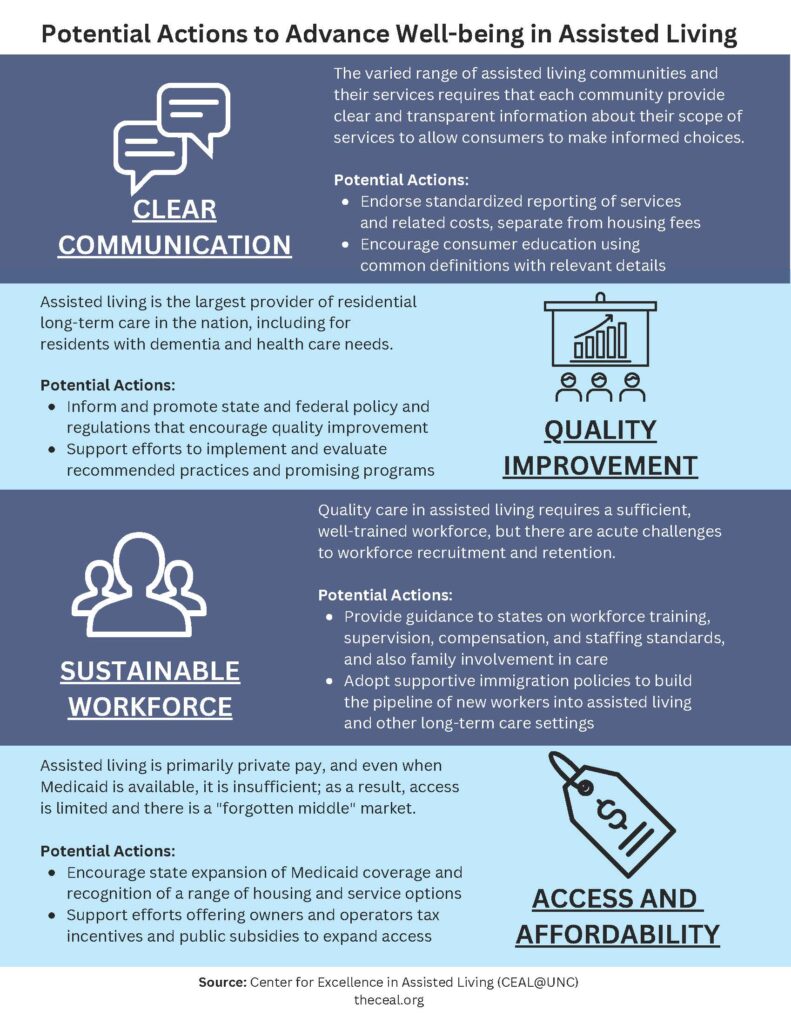
CEAL@UNC recognizes the benefit of ongoing quality improvement in assisted living. Numerous feasible solutions have been suggested that may improve care and outcomes in assisted living, including those in this information sheet. Feel free to utilize and distribute this information sheet among your networks to advance the well-being of the people who live and work […]
by Lea Efird-Green
WHAT THIS MEANS FOR YOU: A study of “home time” (days alive and not in healthcare institutions such as hospitals or skilled nursing facilities) of over 59,000 Medicare beneficiaries who transitioned into assisted living in 2018 found that residents spent 94% of their first year at home in the community. Characteristics associated with lower home time included dual Medicare-Medicaid eligibility, having more chronic conditions, and specific conditions (e.g., dementia). Additionally, in states with more specific regulations for direct care worker staffing and training, and lower specificity for staff licensing requirements, residents tended to spend more time at home. Thus, both individual characteristics and state regulations may impact home time for new assisted living residents.
by Lea Efird-Green
WHAT THIS MEANS FOR YOU: This study categorized 350 assisted living state licensure types into six different types that differed by regulations about health services: housing, holistic, hybrid, hospitality, healthcare, and health support. This categorization may support consumer decision-making and improve the specificity of assisted living research and policy.
by Lea Efird-Green
WHAT THIS MEANS FOR YOU: This study examined differences in who may be admitted to an assisted living community using regulatory data from 2018. Admission restrictions were categorized into 1) health-related conditions, 2) specified behavior, 3) mental health condition, and 4) cognitive impairment. Almost one-third (29%) of communities are governed by regulations limiting admission of individuals with only a health condition, and slightly fewer (24%) of communities have limitations based on all four categories. Just over 11% of AL communities have no restrictions on who may be admitted.
by Lea Efird-Green
WHAT THIS MEANS FOR YOU: This study analyzed 170 psychotropic medication deficiency citations from 152 Oregon assisted living communities to determine discrepancies in state licensing and oversight of psychotropic medication use. It found most deficiencies involved documentation errors; there were unclear regulations for direct care workers who distribute medications; and there was a persistent disconnect about when to seek expertise before requesting psychotropic use.
by Lea Efird-Green
WHAT THIS MEANS FOR YOU: The study examined potentially burdensome end-of-life transitions (e.g., repeated hospitalizations) in relation to state regulations, using Medicare claims data for over 129,000 assisted living residents in communities with 25 or more beds between 2017-2019. There were no associations between transitions and regulations about third-party services or staffing, and small associations between transitions and medication management regulations. These inconclusive results indicate that more research is needed to understand the wide variety of end-of-life outcomes experienced by assisted living residents.
by Lea Efird-Green
WHAT THIS MEANS FOR YOU: In this study, almost 150,000 on-line consumer reviews from nearly 9,000 assisted living communities were analyzed in the context of community, county, and state variables (e.g., regulatory specificity, rurality). Communities with greater proportions of Medicare/Medicaid residents had lower odds of positive reviews, but communities in states with more direct care worker hours per week per bed had higher odds of positive reviews. Higher staffing may advantage positive consumer perceptions.
by Lea Efird-Green
WHAT THIS MEANS FOR YOU: This study examined associations between end-of-life care transitions (meaning stays in hospitals and nursing homes in either the 7 or 30 days before death in this study) and state staffing and training requirements for nearly 114,000 Medicare beneficiaries who died in an assisted living community in 2018-2019. A higher proportion of transitions was associated with stricter regulations about licensed and direct care worker staffing, whereas a lower proportion was associated with more specific regulations about direct care worker training. Therefore, policymakers and practitioners may want to implement regulations that make staff training requirements more specific to better address end-of-life care.
by Lea Efird-Green
WHAT THIS MEANS FOR YOU: This study of almost 21,000 AL residents in 2017 revealed that those with dementia were prescribed antipsychotics during about 13% of their time residing in AL. This proportion varied by state, with Hawaii having the lowest prescription rate (8%), and Wyoming having the highest (21%). Variations may be due to state regulation of AL communities, but the study was not able to determine if prescription practices were appropriate and tied to health outcomes.
by Lea Efird-Green
WHAT THIS MEANS FOR YOU: The Houston Health Department conducted onsite assessments at AL communities to assess infection prevention and control practices. Larger AL communities better implemented CDC guidelines and were more proactive in their COVID-19 response activities. For example, many medium and small communities lacked access to COVID-19 PCR testing and had lower resident vaccination rates.
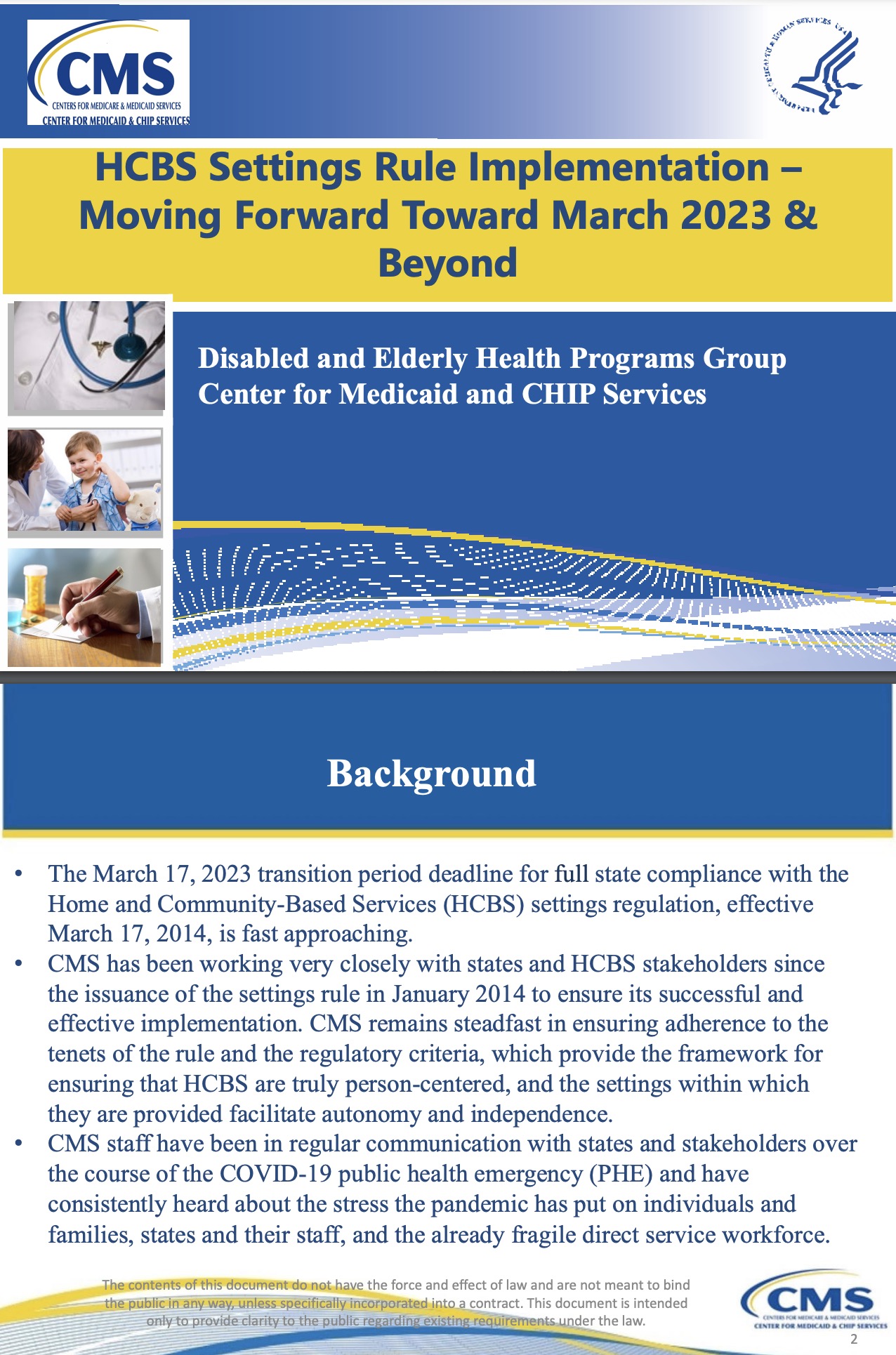
by Lea Efird-Green
by Lea Efird-Green
WHAT THIS MEANS FOR YOU: Data from 680 nursing homes (NHs) and 2940 AL communities in Florida examined compliance with an emergency power rule to have a secondary power source. The rule had higher implementation rates in AL than NH. AL communities were more likely to implement the new policy if they were smaller, did not offer memory care, accepted Medicaid, and had a mental health specialty license. Therefore, organizational characteristics and policies may help or hinder implementing new regulations.
by Lea Efird-Green
WHAT THIS MEANS FOR YOU: Nonprofit AL communities in Florida lost their tax-exempt status in 2006 and regained it in 2017. Even when nonprofit AL communities had to pay property taxes, they provided higher-quality services than for-profit communities: more nursing staff, residents, and variety in care. In contrast, for-profit AL communities had more substantiated complaints and deficiencies, faced more sanctions after inspections, and incurred higher fines on average.
by Lea Efird-Green
WHAT THIS MEANS FOR YOU: A total of 714 administrators and direct care workers in 257 assisted living communities reported that direct care workers had a more negative perception of patient safety culture (PSC) than administrators. Stricter state regulations, particularly regarding staffing, were associated with better perceptions of PSC among direct care workers.
by Lea Efird-Green
WHAT THIS MEANS FOR YOU: Surveys from regulatory administrators in 48 states indicated that in more than half of states, regulatory monitoring was handled by at least three agencies with differing resources (e.g., budget, staffing) and methods (e.g., inspections). Less than half of the states compiled data from inspections, violations, and penalties, and fewer than 10 made this information easily available to the public.
by Lea Efird-Green
WHAT THIS MEANS FOR YOU: Medicare data from nearly 170,000 residents from over 8,000 assisted communities with more than 25 beds who died between 2017 and 2019 indicated that in states with regulations supportive of third-party hospice services, residents were significantly more likely to die in assisted living than in a hospital or nursing home.
by Lea Efird-Green
WHAT THIS MEANS FOR YOU: Medicare data from 23,000 residents in more than 6,000 assisted living communities found that 56% received hospice care during their last month of life. Communities in states with more supportive hospice regulations had significantly more hospice use, especially a more intense type called continuous home care (CHC). Modifications to state regulations to be more supportive of hospice care/CHC might increase the number of residents who use hospice, which might improve quality of life in the days immediately preceding death.
by Lea Efird-Green
WHAT THIS MEANS FOR YOU: Using confirmed COVID-19 cases from 5 states, assisted living communities with a higher population of Medicare/Medicaid dual-eligible minority residents were more likely to have COVID-19 cases, as were those located in more socioeconomically deprived neighborhoods. Communities in states with stricter social distancing policies had significantly lower numbers of cases.
by Lea Efird-Green
WHAT THIS MEANS FOR YOU: A qualitative study of high-end assisted living communities in Chile based on 40 staff, resident, and family interviews found that managers explain these communities’ purpose as meeting the need for household help, making it a class privilege for wealthy residents. Residents view their communities as a luxury and emphasize their choice to live there, indicating control and independence. This research highlights how social class influences perceptions and acceptance of different forms of care.